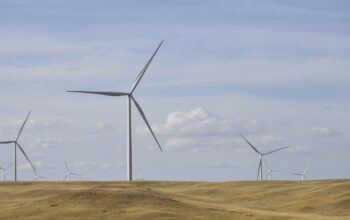In today’s world, environmental sustainability isn’t just a buzzword; it’s a necessity. As we hurtle towards a more sustainable future, companies and individuals alike are embracing innovative strategies to reduce their impact on the planet. Here are some of the top trends shaping the sustainability landscape.
Nature-Based Solutions: Restoring Balance
Trees, wetlands, and coastal areas play a crucial role in absorbing carbon dioxide and protecting communities from climate-driven disasters. Nature-Based Solutions involve restoring these ecosystems to enhance biodiversity and sequester carbon. For example, planting trees in cities can help reduce urban heat, improve air quality, and create habitats for wildlife. This approach is not just about saving the environment; it’s also about safeguarding human well-being.
Circular Economy Models: Breaking the Cycle of Waste
The traditional ‘take, make, dispose’ economy is being challenged by circular models that prioritize reuse, reuse, reuse. Companies are now designing products with recyclability and reusability in mind. Packaging, a major contributor to waste, is undergoing a transformation with the rise of biodegradable materials and reusable designs. Consumers are demanding more eco-friendly options, driving companies to innovate and reduce their environmental footprint.
Renewable Energy Investments: Harnessing the Power of Change
A surge in renewable energy projects is revolutionizing how we power our homes and businesses. Solar and wind technologies are becoming more affordable and accessible, making them feasible alternatives to fossil fuels. Companies are integrating green energy into their operations, reducing emissions and enhancing their sustainability credentials. This shift isn’t just good for the planet; it’s also a strategic move to stay competitive in a rapidly changing market.
Sustainable Supply Chains: The Path to Transparency
Supply chains are complex, often involving multiple countries and stakeholders. Making these chains sustainable involves ensuring ethical sourcing, reducing waste, and promoting fair labor practices. Technology like blockchain is helping companies track their supplies more accurately and transparently, ensuring that consumers get products that not only perform well but also do good.
Digital Transformation for Sustainability: Tech for Good
Digital tools are no longer just about efficiency and cost savings; they’re also being used to drive sustainability. AI can help predict and manage energy consumption, while IoT devices can monitor resource usage in real-time. These technologies are transforming industries from agriculture to manufacturing, enabling companies to make informed decisions that are both sustainable and profitable.
These strategies are not mere theories; they are shaping real-world outcomes. From the efforts of companies like Unilever and Sands, which are committed to reducing waste and carbon emissions, to the conscious choices of consumers worldwide, sustainability is evolving from a niche interest to a global imperative.
References:
- https://www.winssolutions.org/24-sustainability-trends-2026/
- https://www.arbor.eco/blog/sustainability-statistics
- https://www.cuatrecasas.com/resources/2024-sustainability-trends-and-what-we-expect-in-2025-txt-eng-6788fced32590576308386.pdf?v1.87.0.20250425
- https://epackagingsw.com/blog/packaging-sustainability-trends
- https://www.sands.com/news/earth-day-2025-sands-environmental-priorities/
- https://assets.publishing.service.gov.uk/media/68090b960324470d6a394f3d/energy-nps-update-aos-appendices-volume-1.pdf
- https://www.sdmmag.com/articles/104218-the-state-of-security-sustainability-in-2025
- https://www.queens.edu/internships/wp-content/uploads/sites/21/2025/04/CareerDevelopmentGuide2022a.pdf



